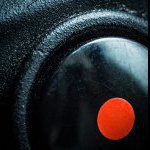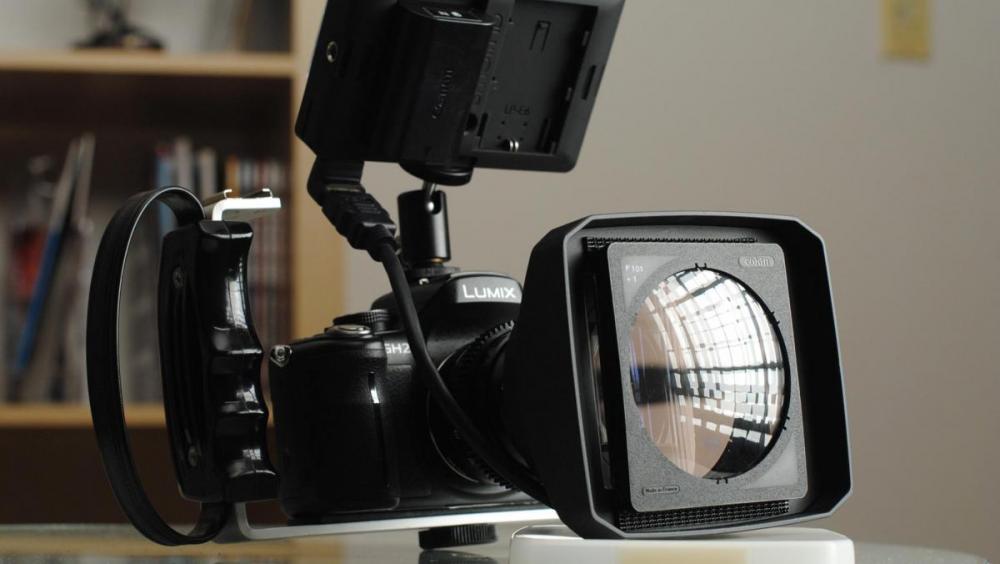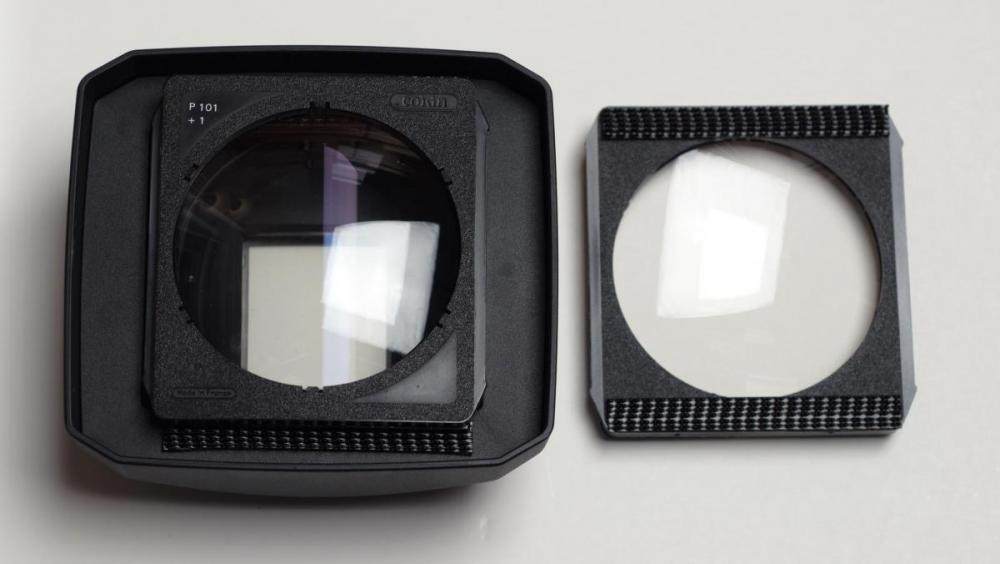Search the Community
Showing results for tags 'Close UP'.
-
In the end, we never stop talking about these suckers across multiple threads, so I'm gonna try to compile as much information as I can into this one. As in most cases, diopters are cheaper than anamorphics, I ended up with a lot of them, from multiple brands and multiple performances. The key was never go where everyone else is trying to find. Got the classics too, but that was luck. Anyway, let's go to the undeniable favorite: Tokina +0.4 Achromatic diopter. My only complain about it is: why aren't you bigger?! My first lens was the LA7200 and I took quite a while to find the 105mm. The next lenses all had different thread sizes. I could filter the Hypergonar on 77mm or 86mm, the Kowa with 72mm, Sankor 72mm too, Isco 54 at 95mm or 86mm and had a plan of an alternative 86mm front for the Lomo Squarefront, which didn't go through. Anyway, if I started to look for all these sizes of diopters, I'd go broke. My salvation were the Series 9 filters. If someone isn't familiar with these, they come as unthreaded glass, that you put into an adapter that can range between 67mm and 86mm. That pretty much covers all lenses. I got adapters for 72, 77 and 86. The glass itself has around 83mm diameter. Tiffen Series 9 filters are not in production anymore, so you can pick them off cheap ($1-10), even though they're not so common. The adapters are a bit harder to find. After that, I went crazy on other brands as they showed up with decent sizes. Got 77mm Spiratones +0.5 and +0.25 for $6, 86mm +0.6 Fujinon, 72mm +1.25 Fujinon, 95mm +0.25 Pentax (for the 135-600mm Pentax Zoom), 82mm +0.75 Canon (1300H), etc, all very cheap. Some of them are real heavy, and I don't know if they're achromatics or single elements. The advantage of the bigger ones is, less vignetting, even when you go wide, and, the sharpness is increased, since you don't get corner areas. Finally, I found a couple 4.5" ones (around 114mm), that require special adapters, like Series 9. These adapters are impossible to find! I'm making a couple myself, as I trust threads more than tape. :P EDIT Dec 07, 2014 Why Look for Low Powered Diopters There's a common question going around, of WHY fraction diopters are better than full numbers, so I'm addressing that here too. Rich has a good explanation too >here. As you can see below in the math section, the numbers correspond to certain maximum and minimum focus distances. When it comes to anamorphic lenses, what is the most common minimum focus distance? Something between 1.5m and 2m (or 5 to 7 feet, imperial scale). Iscoramas have 2m minimum focus. Kowas, Sankors and most dual focus projector lenses are set to 1.5m minimum focus. For most shots, this distance is greater than the distance you want to put between the camera and your subject, which leads to being unable to focus properly - also, it's a pretty messed up distance for working indoors. What a +0.4 or +0.5 diopter does is turn this "near 2m minimum focus distance" into "near 2m MAXIMUM focus distance" (see math below, seriously), allowing you to frame and shoot freely indoors and much closer to your subjects. If you want extreme close ups, then you need to have stronger diopters, but a +0.5 is a key tool for "standard" shots. Achromats are also better, but they have their own explanation below too. Focus and Anamorphic Compression Another thing that relates directly to diopters is the lens compression. Most of our 1.5x or 2x stretch lenses only have that proportion when focused to infinity. Things change when you twist the focus ring. As you get closer to minimum focus, the less compression you have. 2x lenses tend to go towards 1.7x or 1.8x, Iscoramas get very close to 1.3x. When unsqueezing your footage, this compression disparity can make shots look different from the rest of the footage, as if it was shot with a different lens. In a technical level, it really was a different optical path. Using diopters you get rid of using the shorter distances on your focus ring and keep your compression constant throughout the shots. DISCLAIMER: I don't know how this relates to baby anamorphics, and this CERTAINLY does not affect focus through lenses since you don't change the distance between the anamorphic elements. //EDIT. Strength measuring: Fujinon: The first number is their maximum focus distance, the second number is the thread size. For example, a 16086 reaches 160cm at infinity (+0.6) and has 86mm thread. 190101, 190cm at infinity focus, 101mm thread. Canon: The newest series (250D and 500D) measures in millimeters their maximum distance. 250mm equals +4 and 500mm equals +2. The "D" stands for Double element. The older ones use the same measuring, 1300H = 1300mm, +0.75. There's also a 900H, 105mm, which is a like +1.1. When nothing is marked on it, good luck with testing the thing. It's usually not hard, but most of them have information lying around the web. Thread size: As well as regular threads, some are marked with a C after the number (mostly 86C, 95C and 105C), that means the thread on this filter is coarse, 1mm pitch. Our regular (fine) threads have .75mm pitch. There are adapters for these too, like the one below, from 86mm fine to 86C. http://www.ebay.com/itm/350325079425 Minimum and Maximum focus distance: Just realized that I haven't explained the math relating diopter strength and maximum focus range! Since most anamorphics perform better when focused closer to infinity, a diopter gives great help in "faking" it optically. A close up filter "sets" infinity just a couple meters/feet away, so anything BEYOND that certain point will be IMPOSSIBLE to focus. Of course, this will NOT follow the lens' focus marks. Infinity on the lens now equals the diopter maximum focus distance. Now, the numbers: S = diopter strength (+0.5, +0.6, +1, +2, etc) MaxFm = maximum focus distânce, measured here in METERS MaxFm = 1 / (S) Ha! I bet you expected something waaaay more complex, right? Some examples are never bad, so let's get to it. I'll use +0.5, +1.25 and +2 as sample strengths. MaxFm = 1/(0.5) = 1/(1/2) = 1 x 2/1 = 2 meters MaxFm = 1/(1.25) = 1/(5/4) = 1 x 4/5 = 0.8 meters MaxFm = 1/(2) = 1/2 = 0.5 meters If you live in a country where imperial scale prevails over the metric system, you just gotta do a quick fix to the expression. S = diopter strength (+0.5, +0.6, +1, +2, etc) MaxFf = maximum focus distânce, measured here in FEET MaxFf = (3.3 / S) Same examples from above, now in feet MaxFf = 3.3/(0.5) = 1/(1/2) = 3.3 x 2/1 = 6.6 feet MaxFf = 3.3/(1.25) = 1/(5/4) = 3.3 x 4/5 = 2.6 feet MaxFf = 3.3/(2) = 3.3/2 = 1.6 feet Regarding minimum focus distance, I'd say anything closer than half maximum focus distance is gonna look pretty bad already. With high power close ups (+2 and up), I'd say anything closer than 3/4 of your maximum focus distance is gonna be pretty bad already. Of course, this "minimum focus distance" image quality has A LOT of influence from the anamorphic. Also, achromatic diopters will improve almost everything you could imagine. Since I've just mentioned them, here's a list of achromatic diopters, with their strength, manufacturer, price range, etc. http://fuzzcraft.com/achromats.html Price range: Just for checking, here is a list of the most common lenses and their outgoing price. Tokina +0.5 72mm - $150 Kenko +0.5 72mm - $90 Tokina +0.4 72mm Achromatic - $350 Kenko +0.3 105mm - $350 Canon +2 72mm Achromatic - $100 Sigma +1.6 62mm Achromatic - $20 Angenieux +0.25 82mm - $330 Kinoptik +1 82mm Achromatic - $530 Foton-A +1 or +1.25 - $900 (GONE!) Tiffen +0.5 to +2 138mm - $50 and up Tiffen +0.5 to +5 Series 9 - $1-50 Tiffen/Kodak Series 9 Adapters - $20-40 Tiffen +0.5 to +2 4.5" - $10-50 (RARE)
-
Hey guys, I've listed my trusty Tokina achromat +0.4 (yup, the high quality doublet) plus 2 more high quality achromatic diopters (for close-ups) as a 3 piece set on Ebay Germany. They.. just... work...! www.ebay.com/itm/3-achromatic-diopter-SET-Tokina-AT-X-0-4-CLOSE-UP-Olympus-MCON40-MINOLTA-No-0-/111411315171?pt=DE_Foto_Camcorder_Objektive&hash=item19f0a1c1e3 Questions are welcome and will be answerend during the following week.. Happy shooting! Ivor
-
This is my short film 'Light' I've been making over the last month using a Canon 600d with Pentax lenses. http://vimeo.com/69428988 It's a short (90 second) simple story about a lighthouse getting through the night, and features lots of experiments in cinematography - all done on my kitchen table with reversed and macro lenses and a lot of ice! We used a Canon 600D (with Pentax adapter for my lenses) for the film itself as the manual control on this camera, the full HD digital zoom ability and swivel screen made it very useful for those tiny close ups! The film is all shot "live" in 25 frames per second, it's not animated. We used a Pentax-A 50mm f1.2 and a Sigma 24mm superwide II f2.8 mounted in reverse for super-close ups, and a Pentax-A 100mm f4 macro for the widest shots - none of which had an area bigger than, say, a post-it note - and some of the extreme close ups were over an area the size of a fingernail or smaller at around 2:1 to 4:1 scale. For the reversed lenses we used a Canon to Pentax adapter, then a Pentax reversing ring (52mm filter thread for both lenses), then the lens! Note, if you want to use a lens in reverse for close ups you need to use one with an aperture ring, which means most modern digital lenses won't give you any aperture control. We needed a lot of light for shooting down to f16 at 1/50 at ISO 160 in extreme macro where you get several more stops of light falloff, and so we had a big hot 800W light. For some shots it was around a foot (30 cm) from the ice, causing severe melting problems! So we needed to be fast and accurate with focus to a millimetre level on a disintegrating, slippery set all of which was too small to position without completely ruining composition! Most of the time it was a fun challenge but was occasionally frustrating! The ice variety was achieved by chipping it in different ways, letting it melt for different times, freezing larger volumes of water (mug sized) and smashing the ice with a hammer to get particularly clear stuff, or ice cube size to get the cloudier stuff. Some of it had a small amount of blue food colouring too. We edited in Premiere Pro CS6 and After Effects CS6, where we added the lighthouse light and did a little colour correction. The film was made for the Depict short film competition in the UK. I hope you like the film, happy to explain any techniques and looking forward to hearing your thoughts.
-
I did mention this in another thread, but I think that it probably deserves its own topic. For those of you trying to mount diopters on LA7200 anamorphic lenses, this is what I have been doing (see pictures). The binding product is called Dual Lock. It is similar to velcro but is adhesive-sided and creates a stronger bond. I never have to worry about my diopters slipping off. It works well with inexpensive Cokin-P diopters as pictured. With a GH2, I can shoot with the Voigtlander Nokton and the LA7200 with only slight vignetting. So 30mm and up should be vignette free. It's a very simple concept but I haven't seen anyone else using it and it took me a while to figure it out. I hope that others find it useful.
-
Or so it would seem. I just ordered a set of these for my Iscos: [url="http://www.xumeadapters.com/"]http://www.xumeadapters.com/[/url] It should make swapping and combining diopters a snap. I will let you know my thoughts when I receive them.






